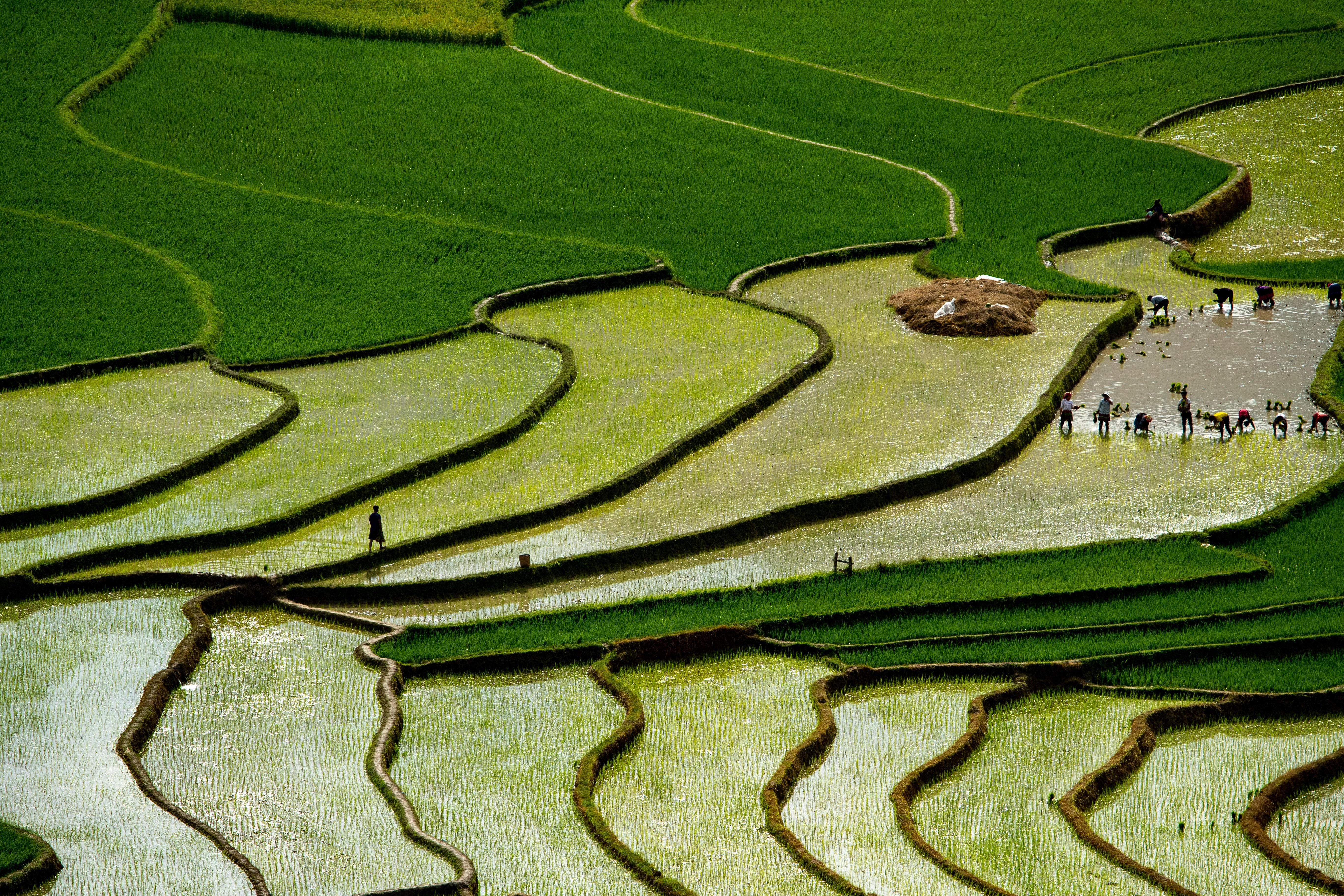Rice is a dietary staple for half of the world’s population. In the late 20th century, governmentally-controlled production of rice brought China out of famine and edged India off the brink of starvation. However, the production of rice, like many agricultural practices, is both a victim and perpetrator of climate change. As another rice shortage creeps up on the world, agricultural and political innovation is needed to mitigate the social and environmental harm rice induces.
To alleviate the famine of the Mao regime, both the Chinese and Indian governments worked on projects that promoted the growth of the high-yield rice variant that better absorbed nutrients from fertilizer. This lifesaving variant was accompanied by policies that placed rice in the center of the national economy. As a precaution against renewed famine, many countries in South and Southeast Asia have since subsidized rice farmers by buying their product at above-market price and selling it cheaply to poor families. These policies are further backed by national rice-independence programs and export bans.
However, the bonus they once provided is fading as the resources required to grow rice, like freshwater, are becoming scarce. Rice is grown on lowland fields flooded with a shallow layer of water to reduce pests and weeds. As sea levels rise and rain levels increase, these lowlands are covered in floodwater, killing the rice four days after its submergence. The salinity of the water strips the soil of nutrients, making it difficult to replant fields without added fertilizer. Combined with increasing temperatures, many areas that were once suited for rice farming are becoming desolate. Resource scarcity, compounded with weather abnormalities, results in rice shortages and sky-rocketing prices that disproportionately affect poorer communities that are reliant on rice for most of their nutritional needs.
In response, the International Rice Research Institute (IRRI) has developed a flood-resistant rice variant, Sub1. By 2014, five million farmers had switched to the seeds and a 2021 study in Bangladesh showed that farmers using Sub1 increased their harvest by 6% and their profits by 55%.
The IRRI now aims to create region-specific varieties that adapt to disruptive climate patterns and innovate new methods of rice production that reduce its environmental impact. Rice irrigation systems utilize vast amounts of freshwater recycling. Taking into account the water used to process and transport the rice, a serving of four ounces of brown rice consumes 246 liters of water, slightly less than the 276 liters of water required to produce four ounces of white rice.

Moreover, flooded fields starve the soil of oxygen and encourage the growth of methane-producing bacteria. After bovine farming, rice is the second largest gas source in the agricultural sector and contributes 11% to the total. That is equivalent to 1.5% of all greenhouse gas emissions, similar to the contribution of aviation.
Much of the solutions against the rice crisis revolve around the responsible consumption of water. Scientists have recently found that rice can grow with about half the water it’s usually allotted. Now, the IRRI is promoting alternate wetting and drying (AWD) growing technology that requires farmers to periodically drain and re-irrigate their fields with recycled water. The dry soil hinders methane-producing bacteria, reducing emissions by 30 to 70%.
Researchers at Cornell University are providing farmers with another climate-resilient growing method which disregards flooded fields entirely. The System of Rice Intensification (SRI) focuses on the nutrients the crop needs by supplementing the soil with composted waste to increase its fertility. This method can reduce water consumption by 25 to 50% and increase yields.
However, neither the gene-modified rice seeds nor the innovative growth methods are able to combat a rice crisis without policy changes. National plans implemented during the first green revolution stubbornly persist and are barriers to a second revolution. Due to rice’s central role in GDP throughout countries in Asia, vast amounts of land have been set aside for rice production, reducing crop diversification. In areas where the newly dry climate favors other staples like corn or wheat, farmers must rely on government subsidies to survive through the unproductive harvests of their forced trade. As governments realize the detriment of past policies, they are incentivizing farmers to switch to other crops by equating support to best farming practices
Though the rice crisis may not seem to affect IE students directly, it is a reminder that food systems are interconnected to energy and water. The Sustainability Office published a sustainability guidebook on the Campus Life website to help students understand their impact and change-making power. It provides resources that detail ways to reduce food waste and conserve the water and energy used to produce it. On a larger scale, IE Foundation sponsors the Center for Water and Climate Adaptation which researches water management through economics and financing. Students are also offered the opportunity to propose sustainable food business models through the Food Culture Lab.
Addressing food security issues requires the collaboration of individual and systemic sustainability efforts. While science such as gene modification can significantly change the agricultural landscape and amend it to the new conditions posed by climate change, the ability to sustain global food systems boils down to one thing: respect for the natural resources that make them possible.







